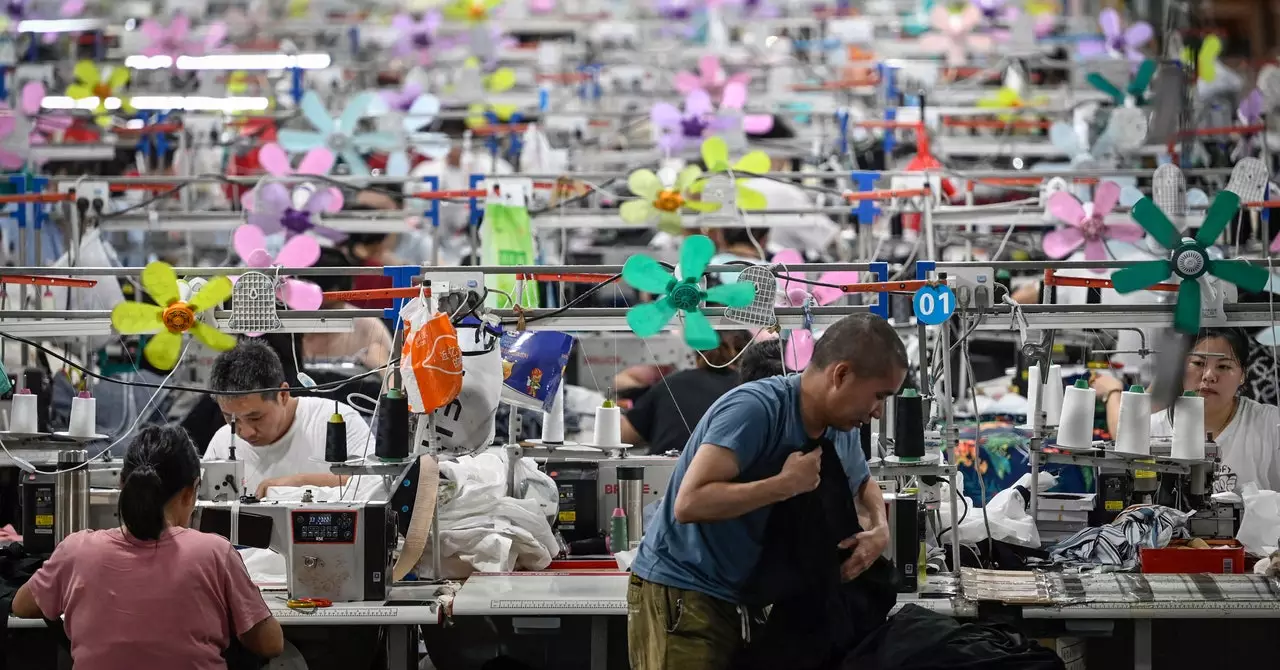In 2023, Shein emerged as a powerhouse within the fast-fashion landscape, not only defining trends but reshaping the entire retail model. This global giant leverages an expansive network that spans hundreds of countries, transporting vast quantities of inexpensive clothing to eager consumers at a staggering pace. Influencers have turned the company into a cultural phenomenon, popularizing “Shein hauls” on platforms like TikTok and Instagram, effectively creating a cycle of consumption that thrives on social media engagement. However, the success of Shein is not merely a result of savvy marketing; rather, it hinges on complex algorithms and machine learning technologies that dictate inventory management and production schedules, pushing the boundaries of what rapid consumerism entails.
The Role of AI in Manufacturing
Artificial Intelligence is pivotal in Shein’s operations. The technology enables the company to analyze consumer behavior and preferences in real-time, allowing it to anticipate fashion demands with frightening accuracy. As a result, the production cycle has been reduced dramatically—new designs can be turned into garments in as little as ten days, while thousands of new items permeate their online marketplace daily. Such efficiency is alarming in its environmental implications; every step from production to transportation generates significant carbon emissions. While Shein has made public commitments to reduce its carbon footprint, with aspirations of achieving net-zero emissions by 2050, these pledges stand in stark contrast to its operational realities as reported emissions have surged rather than diminished.
Shein’s third annual sustainability report revealed an uncomfortable truth—its carbon emissions nearly doubled from 2022 to 2023, raising questions about the sincerity and viability of its sustainability initiatives. Critics argue that the frameworks the company has established—namely, an extremely accelerated manufacturing process powered by AI—are fundamentally at odds with genuine sustainability. Experts like Sage Lenier, of Sustainable and Just Future, draw attention to the paradox where artificial intelligence, ostensibly a tool for optimization and efficiency, ultimately exacerbates Shein’s environmental footprint rather than mitigating it.
The Environmental Toll of Fast Fashion
The sheer volume of clothing churning out from Shein’s production lines reflects a broader crisis in the fast-fashion industry—an insatiable demand for cheap clothing that fuels resource over-exploitation and massive waste production. With approximately 600,000 products available at any given moment and average prices around $10, Shein contributes to a culture where clothing is disposable rather than cherished. Industry analyses suggest that around 44% of Gen Z shoppers in the United States make regular purchases from Shein, showcasing a troubling trend that intertwines fashion with environmental degradation. The statistics are staggering: Shein emitted 16.7 million metric tons of carbon dioxide in 2023, equating to emissions from several coal power plants operating continuously.
Beyond carbon emissions, Shein has attracted criticism for its labor practices and textile waste, intensifying the call for a reevaluation of fast-fashion models. Reports of exploitative labor conditions in factories, combined with the relentless production cycles that Shein champions, expose a systemic issue that extends far beyond environmental impact. This troubling intersection of human and ecological exploitation highlights a grim reality that accompanies the ultra-fast fashion phenomenon—consumerism has a human cost, one that often goes unnoticed amid the allure of trendy low-cost apparel.
The case of Shein serves as a poignant reminder of the urgent need for a paradigm shift within the fashion industry. As consumers grow increasingly aware of the environmental and social ramifications of their purchases, it is imperative for companies like Shein to invest genuinely in sustainable practices rather than superficial marketing narratives. The future of fashion must prioritize ethical production, responsible consumption, and transparency to foster a system that values the planet and its inhabitants over mere profit. For Shein and its contemporaries, the challenge lies not solely in addressing emissions but in reimagining an industry founded on ethical and sustainable principles, lest the environmental costs of their business model continue to spiral out of control.

